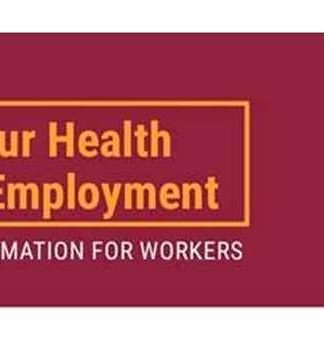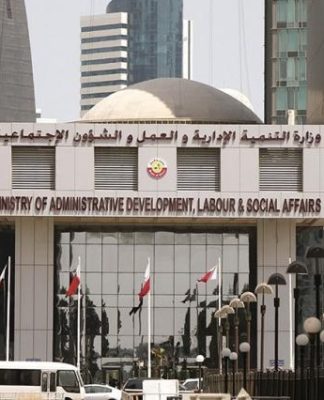Analysis
Councils spending more on debt than on providing services – see how much your council spends
Austerity has led to changes in how councils in England are funded, which has meant some councils are spending more on debt and others are running down their spare reserves.
By Daniel Dunford, Saywah Mahmood and Julian Amani, data journalists
Friday 17 March 2023 06:38, UK
Councils are spending more servicing debt than on services
Why you can trust Sky News
Sky News analysis has found that two Surrey councils spend more on interest and paying back loans than they do on services, like transport and social care.
Neighbouring borough councils Spelthorne and Runnymede have said they have had to make investments in response to government cuts.
Both councils’ investment has mainly been in commercial property, which they rent out for a profit.
In 2021/22, Spelthorne spent £36m on financing debt, almost 60% more than the £22.8m they spent on services.
Runnymede also spent nearly 50% more on debt than on services, spending £17m on debt and £11.5m on services.
Eastleigh, Basildon and North East Derbyshire all spent more than half of the amount they spend on services on repaying debt and interest.
Use our tool to see what your council in England spends on debt compared to what it spends on services, and how that’s changed in recent years.
Both Spelthorne and Runnymede suggest that there is no issue with their investments, however, as they’re making big returns.
A Spelthorne Borough Council spokesperson said: “The income that the portfolio generates each year far outweighs the debt and therefore the financing is not a burden, and in fact without this income, crucial service provision that support residents would be directly and adversely affected.
“[…] We acquired these investment assets acquisitions in 2016-2018 as part of a capital strategy to generate sufficient long-term income to offset the impact of the disappearance of government grants.”
A Runnymede Borough Council spokesman said: “The council made a strategic decision several years ago to borrow money from HM Treasury to invest in commercial property which we rent out.
“This was done to replace cuts in government funding which all local authorities suffered. We’ve used this income to pay for substantial regeneration in our towns, bringing fantastic facilities to the borough, generating footfall for local businesses, creating new jobs, and revitalising town centres.
“The debts we hold are well managed and do not affect the way core council services are provided.”
The cuts in government funding mentioned by both have affected other councils across England.
This includes the Revenue Support Grant, a central government grant given to local authorities which can be used to finance revenue expenditure on any service.
Needs-based central government grants like this used to be the largest source of revenue for councils.
But after more than a decade of austerity and changes in government funding, they rely far more on council tax and retained business rates levied on residential and commercial properties in their area.
Across England, the amount of Revenue Support Grant given to councils overall has decreased by 90% between 2013/14 to 2021/22.
Previous Sky News analysis has shown deprived areas experienced the biggest reductions in spending power.
Big investment can go wrong for councils
Other councils have made big investments like Spelthorne and Runnymede in response to government cuts, but with less success.
Iain Murray, Director of Public Financial Management at the Chartered Institute of Public Finance and Accountancy (CIPFA) says councils need to consider the risks associated with big investments.
“They need to make decisions based on not just the here and now but model scenarios. A lot of these decisions were made in an environment where inflation was low and fairly static and stable,” he told Sky News.
“Since the last 12 months, we’re now in a completely different economic situation.”
In situations where things may have gone wrong, “it may be that there’s just not been enough forethought about some of the potential what ifs”.
Another Surrey council, Woking Borough Council, is one of several in England dealing with big debt problems.
The council said it was in the territory of issuing a Section 114 noticei – which means the government has to intervene to ensure local services are sustainable.
Other councils face similar problems. Slough, Croydon and Thurrock – which has a £500m deficit caused by a series of disastrous investments in risky commercial projects – all issued Section 114 notices last year.
Woking had debts amounting to around £2bn.
Like other councils in England, Woking’s funding structure has changed significantly in the past decade.
Woking shared their sources of revenue with us for the 2011/12 and 2023/24 year.
The amount the council will receive in government funding for 2023/24 is 10% lower than it was in 2011/12, from £5.2m to £4.7m.
The amount of Revenue Support Grant it receives has decreased by 92% over the same period, while council tax receipts have risen by nearly 40%, from £8.3m to £11.4m.
Councils are running down their unallocated reserves
The reduction in government funding also means that some councils are running down their unallocated reserves.
Unallocated reserves are held so councils can continue to deliver local services when unexpected situations arise.
Unallocated reserves in Newark & Sherwood, in Nottinghamshire, Uttlesford, in Essex, and South Norfolk have decreased by more than 80% between 2016/17 to 2021/22.
Cllr James Jamieson, Chairman of the Local Government Association, said: “Over the past decade, councils have already done more than their fair share of the heavy lifting when it comes to putting public finances on a more sustainable footing.
“Many councils are still grappling with significant challenges when setting their budgets and trying to protect services from cutbacks due to the deep underlying and existing pressures they face.
“[…] Councils want to work with government on a long-term funding plan which ensures they have adequate resources, certainty and freedoms and can deliver local services for our communities.”
Click to subscribe to the Sky News Daily wherever you get your podcasts
Does this mean councils will go bankrupt?
It’s not possible for a council to go bankrupt in the same way as an individual or a business, but what it can do is issue a Section 114 notice, which is effectively the same thing.
This Section 114 notice triggers a form of action which blocks any new spending and gives the council 21 days to meet and decide what to do next – typically setting a new budget reducing spending on services.
Funding for services like safeguarding vulnerable people are protected, existing financial commitments and contracts will be honoured, as well as ongoing payment of council staff.
On it’s own, councils spending large amounts on financing their debts and running down their reserves does not mean they’re at risk of issuing 114 notices, or financial disaster.
However, spending on debt and the amount of their reserves councils are getting through are indicators that CIPFA has identified that make councils less financially resilient.
Other identifiers of financial reliance are harder to measure.
For example, CIPFA suggests councils should have sound financial management and good governance.
Financial plans should be made in the medium term, rather than just trying to get from budget to budget in the way that struggling households might make money stretch to last from month to month.
This is harder for councils because the amount of funding they receive from central government is only set at the end of each financial year.
We noticed that several councils, like Thurrock and West Northamptonshire, weren’t able to report their accounts on time. West Northamptonshire, in particular, wasn’t able to submit some of its accounts despite receiving an extension.
The Data and Forensics team is a multi-skilled unit dedicated to providing transparent journalism from Sky News. We gather, analyse and visualise data to tell data-driven stories. We combine traditional reporting skills with advanced analysis of satellite images, social media and other open source information. Through multimedia storytelling we aim to better explain the world while also showing how our journalism is done.
Why data journalism matters to Sky News
Related Topics
Data And Forensics






























